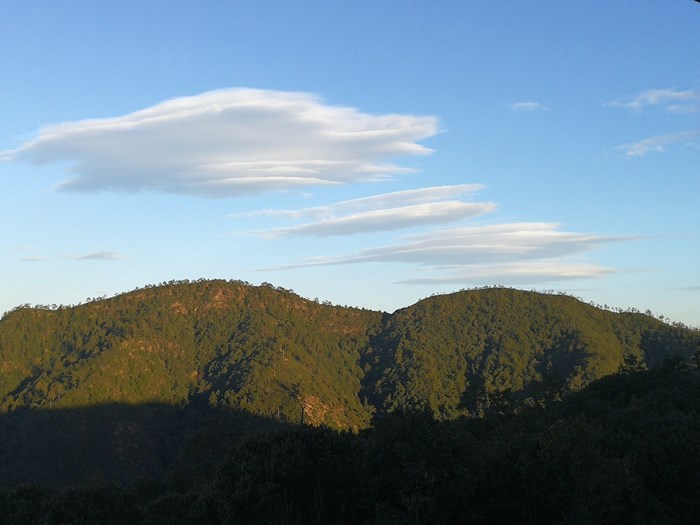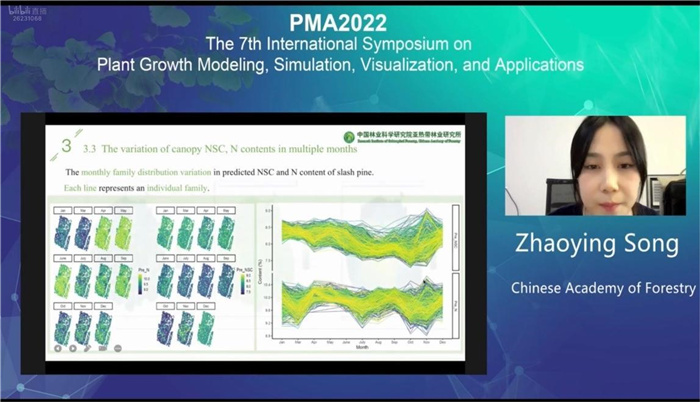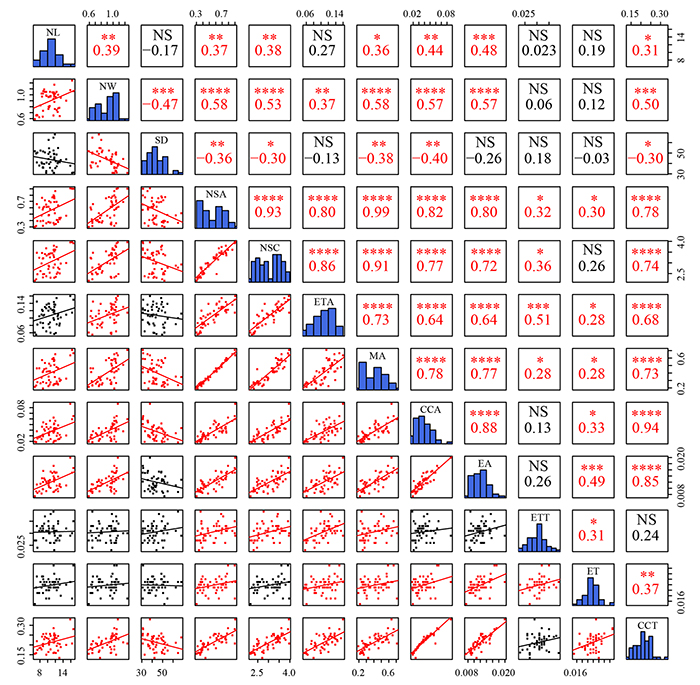
微型土壤动物在根际中的相互作用
编号
lyqk009424


中文标题
微型土壤动物在根际中的相互作用


作者
孙跃志


作者单位
辽宁省林业发展服务中心,辽宁省防护林建设与治沙中心,沈阳 110036


期刊名称
世界林业研究


年份
2021


卷号
34


期号
1


栏目编号
1.0


栏目名称
专题论述


中文摘要
土壤微生物、植食性昆虫、土壤动物等通过植物形成一个相互联系的有机体,但目前研究多针对单个生物群体,对这些生物体的累积作用和相互作用的认识并不完善,同时微型土壤动物在根际中重要地位往往被忽视。文中结合根际微型土壤动物与植物及微生物相互作用的相关研究,阐述微型土壤动物在植物生长过程中是如何发展和相互作用的。植物与根际微型动物间的相互作用显然不仅局限于微型动物的矿化活动,对植物造成的影响并不单一。相反,植物、共生菌群、土壤动物和土壤营养状况与微动物群间存在复杂的相互作用,微型土壤动物影响植物并受植物的影响。


基金项目
国家自然科学基金委员会青年科学基金项目(31700538)


英文标题
Interaction Between Micro-Fauna in the Rhizosphere


作者英文名
Sun Yuezhi


单位英文名
Liaoning Forestry Development Service Center, Liaoning Shelter Forest Construction and Sand Controlling Center, Shenyang 110036, China


英文摘要
Soil microorganisms, phytophagous insects and soil animals form an interconnected organism through plants, but the present researches mostly puts the focus on biotic community, which leads to a lack of good understanding of the cumulative and interactive effect of these organisms and the ignorance of the important position of micro-fauna in the rhizosphere. Based on the studies of rhizosphere micro-fauna and the interaction between plants and microbes, the paper elaborates how the micro-fauna develop and interact in the process of plant growth. The interaction between plants and rhizosphere micro-fauna is obviously not confined to micro-fauna mineralization activities, which means that the effects on the plant isdiverse. Instead, plants, symbiotic microbes, soil animals and soil nutrition state have the complex interactions with micro-fauna, which indicates that micro-fauna influences and is influenced by plants.


英文关键词
micro-fauna;rhizosphere;plant growth


起始页码
14


截止页码
18


投稿时间
2020/2/27


最后修改时间
2020/7/30


作者简介
孙跃志,男,高级工程师,研究方向为林木根际微生物及化感作用,E-mail:syzvsfr@126.com


分类号
S714.3;S718.6


DOI
10.13348/j.cnki.sjlyyj.2020.0074.y


参考文献
[1] WARDLE D. Communities and ecosystems: linking the aboveground and belowground components[J]. Austral Ecology, 2010, 29(3):358-359.
[2] ALPHEI J, BONKOWSKI M, SCHEU S. Protozoa, nematoda and Lumbricidae in the rhizosphere of Hordelymus europaeus (Poaceae): faunal interactions, response of microorganisms and effects on plant growth[J]. Oecologia, 1996, 106:111-126.
[3] INGHAM E R, TROFYMOW J A, HUNT H W, et al. Trophic interactions and nitrogen cycling in a semi-arid grassland soil: I. seasonal dynamics of the natural populations, their interactions and effects on nitrogen cycling[J]. Journal of Applied Ecology, 1986, 23(2):597-614.
[4] BONKOWSKI M, CHENG W X, GRIFFITHS B S, et al. Microbial-faunal interactions in the rhizosphere and effects on plant growth[J]. European Journal of Soil Biology, 2000, 36(3/4):135-147.
[5] CLARHOLM M. Interactions of bacteria, protozoa and plants leading to mineralization of soil nitrogen[J]. Soil Biology & Biochemistry, 1985, 17(2):181-187.
[6] INGHAM R E, TROFYMOW J A, INGHAM E R, et al. Interactions of bacteria, fungi, and their nematode grazers: effects on nutrient cycling and plant growth[J]. Ecological Monographs, 1985, 55(1):119-140.
[7] JENTSCHKE G, BONKOWSKI M, GODBOLD D L, et al. Soil protozoa and forest tree growth: non-nutritional effects and interaction with mycorrhizae[J]. Biology and Fertility of Soils, 1995, 20(4):263-269.
[8] BONKOWSKI M, GRIFFITHS B, SCRIMGEOUR C. Substrate heterogeneity and microfauna in soil organic `hotspots` as determinants of nitrogen capture and growth of ryegrass[J]. Applied Soil Ecology, 2000, 14(1):37-53.
[9] BONKOWSKI M, JENTSCHKE G, SCHEU S. Contrasting effects of microbes in the rhizosphere: interactions of mycorrhiza [Paxillus involutus (Batsch) Fr. ], naked amoebae (Protozoa) and Norway spruce seedling (Picea abies Karst.)[J]. Applied Soil Ecology, 2001, 18(3):193-204.
[10] GRIFFITHS B S. A comparison of microbial-feeding nematodes and protozoa in the rhizosphere of different plants[J]. Biology and Fertility of Soils, 1990, 9(1):83-88.
[11] INGHAM E R. Soil Protozoa[J]. Soil Science, 1995, 159(4):281-282.
[12] ROBINSON D, GRIFFITHS B, RITZ K, et al. Root-induced nitrogen mineralisation: a theoretical analysis[J]. Plant and Soil, 1989, 117(2):185-193.
[13] MERCER C F, DENTON C S, YEATES G W, et al. Impact of clover cyst nematode (Heterodera trifolii) infection on soil microbial activity in the rhizosphere of white clover (Trifolium repens): a pulse-labelling experiment[J]. Nematologica, 1998, 44(1):81-90.
[14] SAGGAR S, MERCER C, HEDLEY C, et al. Increase in 14C-carbon translocation to the soil microbial biomass when five species of plant-parasitic nematodes infect roots of white clover[J]. Nematology, 1999, 1(3):295-300.
[15] BARDGETT R D, DENTON C S, COOK R. Below-ground herbivory promotes soil nutrient transfer and root growth in grassland[J]. Ecology Letters, 1999, 2(6):357-360.
[16] BONKOWSKI M, BRANDT F. Do soil protozoa enhance plant growth by hormonal effects?[J]. Soil Biology & Biochemistry, 2002, 34(11):1709-1715.
[17] ROLFE B G, DJORDJEVIC M A, WEINMAN J J, et al. Root morphogenesis in legumes and cereals and the effect of bacterial inoculation on root development[J]. Plant and Soil, 1997, 194(1/2):131-144.
[18] BIRD M K, KOLTAI H. Plant parasitic nematodes: habitats, hormones, and horizontally-acquired genes[J]. Journal of Plant Growth Regulation, 2000, 19(2):183-194.
[19] MARILLEY L, ARAGNO M. Phylogenetic diversity of bacterial communities differing in degree of proximity of Lolium perenne and Trifolium repens roots[J]. Applied Soil Ecology, 1999, 13(2):127-136.
[20] LAMBRECHT M, OKON Y, BROEK A V, et al. Indole-3-acetic acid: a reciprocal signalling molecule in bacteria–plant interactions[J]. Trends in Microbiology, 2000, 8(7):298-300.
[21] PATTEN C L, GLICK B R. Bacterial biosynthesis of indole-3-acetic acid[J]. Canadian Journal of Microbiology, 1996, 42(3):207-220.
[22] HOLLAND M A. Occam's razor applied to hormonology: are cytokinins produced by plants?[J]. Plant Physiology, 1997, 115(3):865-868.
[23] SHISHIDO M, MASSICOTTE H B, CHANWAY C P. Effect of plant growth promoting, bacillus, strains on pine and spruce seedling growth and mycorrhizal infection[J]. Annals of Botany, 1996, 77(5):433-442.
[24] MENGEL K. Turnover of organic nitrogen in soils and its availability to crops[J]. Plant and Soil, 1996, 181:83-93.
[25] VERHAGEN F J M, LAANBROEK H J, WOLDENDROP J W. Competition for ammonium between plant roots and nitrifying and heterotrophic bacteria and the effects of protozoan grazing[J]. Plant and Soil, 1995, 170(2):241-250.
[26] PHILLIPS D A, JOSEPH C M, YANG G P, et al. Identification of lumichrome as a sinorhizobium enhancer of alfalfa root respiration and shoot growth[J]. Proceedings of the National Academy of Sciences of the United States of America, 1999, 96(22):12275-12280.
[27] WISNIEWSKI-DYE′F, DOWNIE J A. Quorum-sensing in rhizobium[J]. Antonie Van Leeuwenhoek, 2002, 81(1/2/3/4):397-407.
[28] MATHESIUS U, MULDERS S, GAO M S et al. Extensive and specific responses of a eukaryote to bacterial quorum-sensing signals[J]. Proceedings of the National Academy of Sciences of the United States of America, 2003, 100(3):1444-1449.
[29] JOSEPH C, PHILLIPS D. Metabolites from soil bacteria affect plant water relations[J]. Plant Physiology & Biochemistry, 2003, 41(2):189-192.
[30] RØNN R, GAVITO M, LARSEN J, et al. Response of free-living soil protozoa and microorganisms to elevated atmospheric CO2 and presence of mycorrhiza[J]. Soil Biology & Biochemistry, 2002, 34(7):923-932.
[31] WAMBERG C, CHRISTENSEN S, JAKOBSEN I. Interaction between foliar-feeding insects, mycorrhizal fungi, and rhizosphere protozoa on pea plants[J]. Pedobiologia, 2003, 47(3):281-287.
[32] YEATES G W, BONGERS T, DE GOEDE R G, et al. Feeding habits in soil nematode families and genera-an outline for soil ecologists[J]. Journal of Nematology, 1993, 25(3):315-331.
[33] HEKMAN W E, VAN DEN BOOGERT P J H F, ZWART K B. The physiology and ecology of a novel, obligate mycophagous flagellate[J]. FEMS Microbiology Letters, 1992, 9(3):255-265.
[34] HOUSE G J, STINNER B R, CROSSLEY D A, et al. Nitrogen cycling in conventional and no-tillage agro-ecosystems: analysis of pathways and processes[J]. Journal of Applied Ecology, 1984, 21(3):991-1012.
[35] BROWN A C G K. Insect herbivory affects size variability in plant populations[J]. Oikos, 1989, 56(3):351-356.
[36] HATCH D J, MURRAY P J. Transfer of nitrogen from damaged roots of white clover (Trifolium repens L.) to closely associated roots of intact perennial ryegrass (Lolium perenne L.)[J]. Plant and Soil, 1994, 166(2):181-185.
[37] HANEL L, SIMEK M. Soil nematodes and nitrogenase activity (symbiotic N2 -fixation) in red clover (Trifolium pratense L.)[J]. European Journal of Soil Biology, 1993, 29(3):109-116.
[38] PUTTEN W H V D, VET L E M, HARVEY J A, et al. Linking above- and belowground multitrophic interactions of plants, herbivores, pathogens, and their antagonists[J]. Trends in Ecology and Evolution, 2001, 16(10):547-554.
[39] VERSCHOOR B C, GOEDE R G M D, VRIES F W D, et al. Changes in the composition of the plant-feeding nematode community in grasslands after cessation of fertiliser application[J]. Applied Soil Ecology, 2001, 17(1):1-17.
[40] VESTERGÅRD M. Nematode assemblages in the rhizosphere of spring barley (Hordeum vulgare L.) depended on fertilisation and plant growth phase[J]. Pedobiologia, 2004, 48(3):257-265.
[41] 张铁峰, 张俊国, 魏胜利. 植物对线虫的反应和抵制作用研究[J]. 林业勘查设计,2008(2):53-55.
[42] 孙玥. 土壤动物对水曲柳和落叶松人工林细根生物量、形态、生产和周转的影响[D]. 哈尔滨: 东北林业大学, 2010.


发布日期
2020-08-03


PDF全文
浏览全文


-
相关记录
更多
- 园林夜景照明不同光质对植物生长的影响 2023
- 风和风沙流对植物的影响研究综述 2020
- 植物响应大气氮沉降研究进展 2019
- 土壤磷与植物关系研究进展 2013
- 植物根系生物学研究进展 2013
 打印
打印




